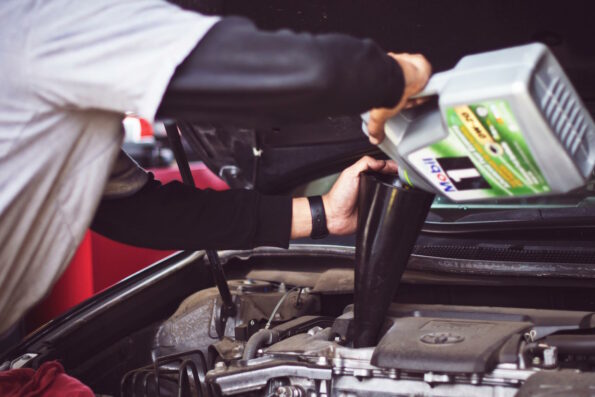As a responsible car owner, you should keep an eye on your vehicle’s health to better its durability and power. One of the basic yet frequently ignored maintenance jobs is checking the oil level of your car. Failure to perform this small routine could result in engine damage, requiring you to spend a lot of money in the future. Let’s look at the signs and signals you must pay attention to.

Dark or dirty oil
You can easily tell if your car requires frequent oil changes by looking at the oil’s level on the dipstick, and if it’s too thick or dark. Through regular operation, engine oil gains contaminants as microscopic particles wear off the engine components, carbon deposits accumulating on the engine components break free, soot is created, and heat changes the oil; this results in a darkened oil. This accumulation may reduce the oil’s ability to keep on lubricating, leading to more friction and deterioration of engine components. Oil that is simply dark in colour is not necessarily an issue. Follow the manufacturer’s guidance on how frequently to check and change it.
Low oil level
You should always ensure that the oil between the maximum and minimum levels indicated by the dipstick. Driving your car with a low oil level will ultimately damage your engine (this will happen quite quickly if you are demanding a lot of your engine, such as when towing). To get the accurate engine oil level, ensure the car is parked on level ground and the engine is cold. You’ll find the dipstick in the engine bay.
Loud engine noise
Your engine can become noisier when the oil level is low. The engine oil greases the moving parts, minimizing friction. Tapping or knocking sounds from the engine are a sign that you might be experiencing an oil level problem – the lifters and/or cam bearings don’t have enough lubrication, or the engine oil is old and has lost its viscosity therefore doesn’t stick to the metal.
Decreased engine performance
The engine parts may not function effectively if the lubrication is not sufficient, as friction can decrease the efficiency and power output. If performance is sluggish, particularly when cold, or if your fuel mileage seems to have got noticeably worse, it’s time to check the oil.
Overheating
The engine oil absorbs some of the generated heat during the engine’s operation. When oil levels are low, or oil has degraded, it may cause difficulty for the engine to maintain its optimal temperature and result in overheating. If there isn’t enough oil, it doesn’t get a chance to cool down. This puts more stress on the other components that are cooling the car (coolant, the radiator and the radiator fan). The car’s temperature gauge monitors the coolant temperature, so if that starts to rise, it doesn’t necessarily mean there’s a coolant issue, it could be an oil issue.
Oil leak
If you smell oil in your car, you probably have an oil leak. Check for smoke from the exhaust when accelerating hard, oil drips under the engine when you park, and oil obviously collecting around engine components. Oil can leak from the oil plug at the bottom of the engine, the oil filter, the valve cover gasket, the oil pan gasket, the head gasket and various seals. A very minor leak of a couple of drips here and there is not something that requires an urgent fix. However, if the red oil warning light comes on when you are driving, you must stop immediately otherwise you could seize the engine.
Routine oil checks form a very important component of car maintenance that should not be neglected. Staying alert and dealing with any symptoms of trouble right away will help your car stay in good working order for years to come.
